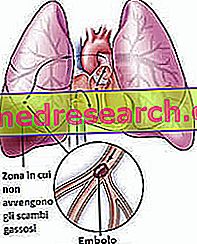Lysozyme is a substance of protein nature present in biological secretions (saliva, tears, spermatic secretions, nasal mucus, milk etc.) and in eggs (the albumen contains large quantities). This enzyme discovered in 1922 by Fleming, carries out an interesting antimicrobial action, thanks to the ability to hydrolyse the peptidoglycans that make up the bacterial wall (the word lysozyme derives from the Greek: lyso = which size and zimo = enzyme). Following the lesion of this mechanically resistant structure, the bacterial cell draws water up to burst.
Not by chance, therefore, lysozyme is abundantly secreted in the body regions most exposed to contact with pathogens (oral cavity, conjunctiva, etc.). Its immunity is evidenced by the fact that infants fed with lysozyme-free formula have a frequency of diarrheal episodes three times higher than infants fed breast milk (in which, in addition to lysozyme, we also find antibodies).
The optimal pH for the functioning of lysozyme is five; in the food field it is used, also under the abbreviation E1105, for the preservation of aged cheeses, including Grana Padano.



